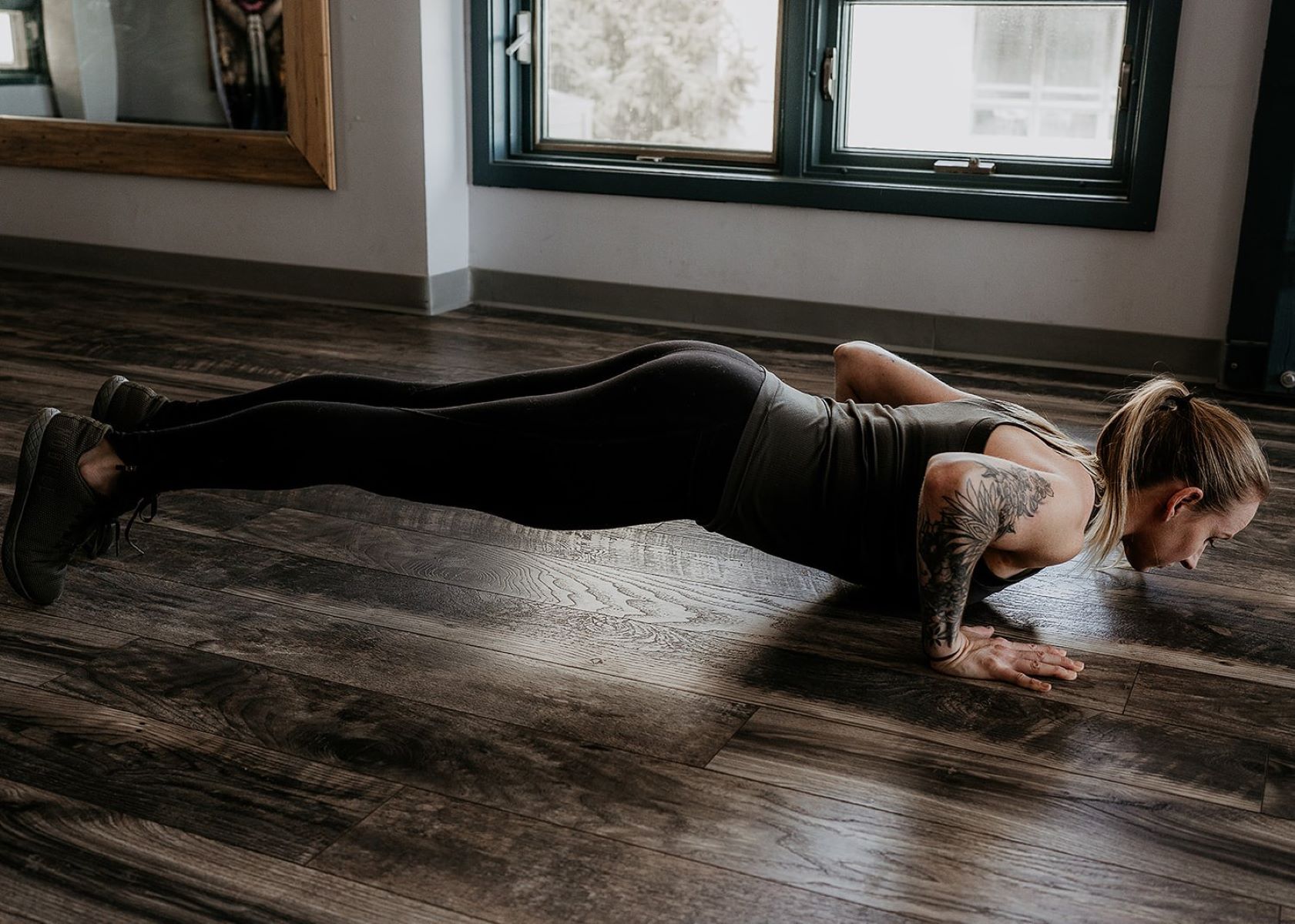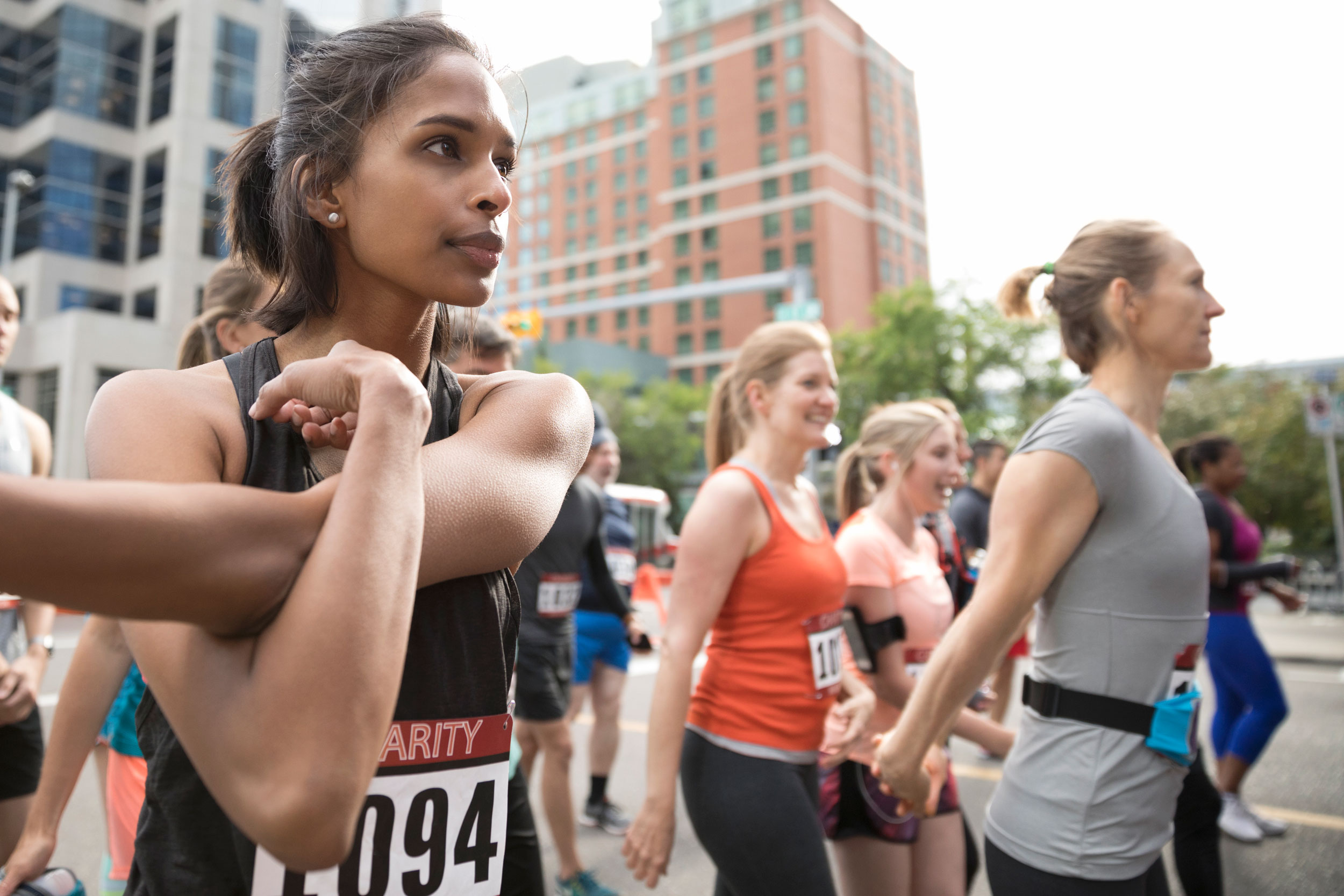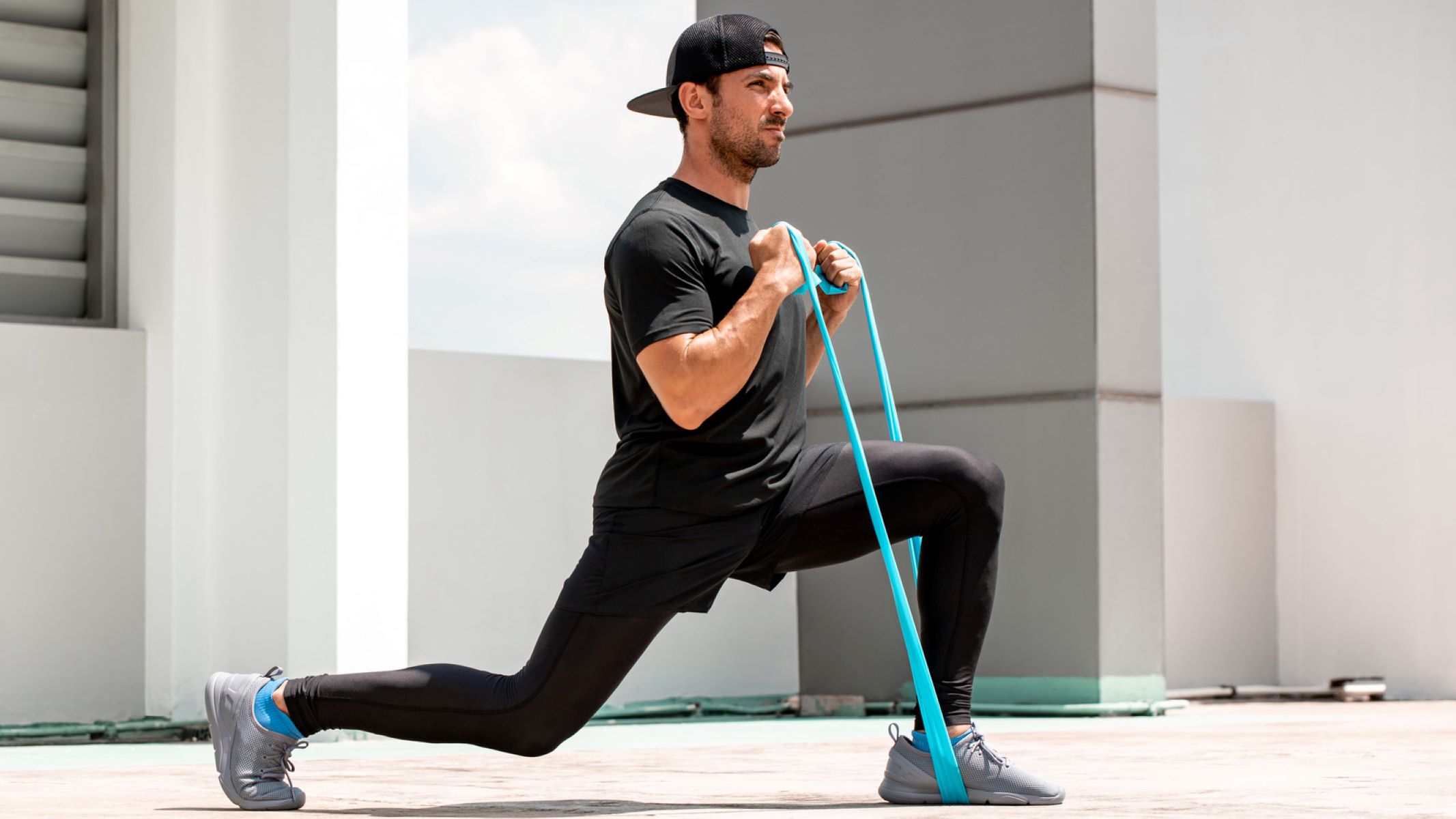

Featured
How To Structure Workout
Modified: August 21, 2023
Learn how to structure your workout routine with our featured guide. Discover effective exercises and tips for maximizing your fitness goals.
Introduction
When it comes to structuring your workout, having a clear plan in place is key to maximizing your results. Whether you’re a seasoned fitness enthusiast or just starting out on your fitness journey, understanding how to structure your workout can help you stay motivated, prevent injury, and achieve your fitness goals more efficiently.
But with so much information out there, it can be overwhelming to figure out the best approach. That’s why in this article, we’ll break down the essential steps to help you create an effective workout structure that suits your needs.
By following a structured workout routine, you’ll be able to target different muscle groups, improve your cardiovascular fitness, and increase your overall strength and flexibility. Plus, by incorporating variety and progression into your workouts, you’ll keep your body challenged and avoid hitting a plateau.
So, whether you’re aiming to build muscle, lose weight, or enhance your athletic performance, let’s dive into the key steps for structuring a well-rounded workout.
Step 1: Setting Goals
Before you start structuring your workout, it’s important to establish clear and realistic goals. Setting goals not only provides you with a sense of purpose but also serves as a roadmap to measure your progress.
When determining your fitness goals, consider what you want to achieve and the time frame in which you want to accomplish it. This will help you establish specific, measurable, attainable, relevant, and time-bound (SMART) goals. For example, your goal could be to lose 10 pounds in the next three months or to be able to run a 5K race in under 30 minutes.
Additionally, it’s important to consider both short-term and long-term goals. Short-term goals can provide you with milestones along your fitness journey, keeping you motivated and focused. Long-term goals, on the other hand, help you envision your ultimate outcome and provide a sense of direction.
Moreover, it’s crucial to make your goals personal and meaningful to you. Understand the reasons behind your goals and how achieving them will positively impact your life. This emotional connection will fuel your motivation and commitment throughout your workout journey.
Once you have established your goals, write them down and keep them somewhere visible. This serves as a reminder and helps you stay accountable. Make sure to regularly review and reassess your goals to track your progress and make any necessary adjustments along the way.
Remember, everyone is different, and what works for one person may not work for another. When setting your goals, consider your current fitness level, any underlying health conditions, and your lifestyle. It’s important to set goals that are challenging yet realistic and sustainable for you.
Now that you have a clear understanding of your goals, it’s time to move on to the next step: warming up.
Step 2: Warm Up
Before diving into your workout, it’s essential to prioritize warming up your body. A proper warm-up routine helps prepare your muscles, joints, and cardiovascular system for the physical activity to come, reducing the risk of injury and enhancing performance.
A good warm-up typically includes dynamic stretches and light cardio exercises. Dynamic stretches involve moving your body through a full range of motion, such as leg swings, arm circles, and walking lunges. These stretches help improve flexibility, increase blood flow to the muscles, and activate the nervous system.
In addition to dynamic stretches, incorporating light cardiovascular exercises like jogging or jumping jacks raises your heart rate and increases blood circulation. This delivers oxygen and nutrients to your muscles, further priming your body for the upcoming workout.
During your warm-up, take the time to focus on the areas of your body that you’ll be targeting in your main workout. For example, if you’re planning a leg-focused workout, include exercises that warm up your leg muscles specifically.
Ideally, your warm-up should last for about 5 to 10 minutes. However, the duration can vary depending on factors such as the intensity of your workout and your current fitness level. Listen to your body and make adjustments accordingly.
Remember, warming up is not just reserved for intense workouts. Even if you’re engaging in low-impact activities or lighter workouts, a proper warm-up is still crucial for injury prevention and optimal performance.
Now that your body is warmed up and ready to go, it’s time to move on to the next step: cardiovascular exercise.
Step 3: Cardiovascular Exercise
Cardiovascular exercise, often referred to as cardio, is a crucial component of any well-rounded workout routine. Engaging in cardiovascular activities improves your heart health, increases endurance, burns calories, and boosts overall fitness levels.
There are numerous options for cardiovascular exercise, allowing you to choose activities that you enjoy and that align with your fitness goals. Some popular examples include running, cycling, swimming, brisk walking, dancing, and aerobic classes.
When incorporating cardiovascular exercise into your workout, aim for at least 150 minutes of moderate-intensity aerobic activity or 75 minutes of vigorous-intensity activity each week, as recommended by the American Heart Association.
During cardiovascular exercise, your heart rate increases, leading to improved cardiovascular fitness. To ensure that you are working within your target heart rate zone, use the formula: 220 – your age = maximum heart rate. The target heart rate zone is typically 50-85% of your maximum heart rate.
Remember to start slowly and gradually increase the intensity of your cardio sessions. This allows your body to adapt and minimizes the risk of injury. If you are new to exercise or have any underlying health issues, it’s always best to consult with a healthcare professional before beginning a cardiovascular exercise routine.
Variety is key when it comes to cardiovascular exercise. Incorporate different activities to keep your workouts exciting and prevent boredom. Additionally, consider cross-training, which involves rotating between different cardiovascular exercises to work different muscle groups and challenge your body in new ways.
Lastly, don’t forget to listen to your body during cardiovascular exercise. If you experience any pain, dizziness, or shortness of breath, stop and seek medical attention if necessary. Your safety and well-being should always be a top priority.
Now that you’ve completed your cardiovascular exercise, it’s time to move on to the next step: strength training.
Step 4: Strength Training
Strength training is a crucial component of any well-rounded workout routine as it helps build muscle, increase strength, and improve overall body composition. Incorporating strength training exercises into your workout routine provides numerous benefits, including increased bone density, improved metabolism, and enhanced functional fitness.
When designing your strength training routine, it’s important to focus on targeting all major muscle groups, including the chest, back, shoulders, arms, legs, and core. This ensures balanced muscle development and helps prevent muscle imbalances or injuries.
There are various ways to engage in strength training, including using free weights such as dumbbells or barbells, resistance bands, weight machines, or even just your body weight. Choose exercises that target specific muscle groups and vary the intensity and resistance to challenge your muscles and promote growth.
When determining the number of sets and repetitions, it’s important to consider your fitness level and goals. Aim for 2-3 sets of 8-12 repetitions for each exercise, allowing for adequate rest between sets. This range helps build both strength and muscle endurance.
Remember to maintain proper form and technique during strength training exercises to prevent injuries and maximize results. If you’re unsure about proper form, consider working with a certified personal trainer who can guide you through the exercises and provide valuable feedback.
It’s important to gradually increase the weight and resistance as you progress. This will challenge your muscles and promote continuous improvement over time. Remember, it’s normal to feel muscle soreness after strength training, but if you experience acute pain or discomfort, it’s best to consult with a healthcare professional.
For optimal results, aim to include strength training exercises at least two to three times a week. This frequency allows for sufficient recovery time between sessions and promotes muscle growth and repair.
Now that you’ve completed your strength training session, it’s time to move on to the next step: cooling down.
Step 5: Cool Down
After completing a challenging workout, it’s important to properly cool down your body. The cool-down is a crucial part of your exercise routine as it allows your body to gradually return to its resting state, promotes recovery, and helps prevent post-workout muscle soreness.
A cool-down typically consists of low-intensity exercises and stretches that help reduce heart rate, prevent blood pooling in the limbs, and promote flexibility. This gradual transition allows your body to recover and prevents dizziness or lightheadedness that may occur if you abruptly stop exercising.
One effective way to cool down is by engaging in low-intensity cardiovascular exercise, such as jogging or brisk walking. This helps gradually decrease your heart rate and gently circulate blood throughout your body.
Additionally, incorporating static stretches during your cool-down can help improve flexibility and reduce muscle tension. Focus on stretching the major muscle groups that were involved in your workout. Hold each stretch for 15-30 seconds without bouncing, and remember to breathe deeply and relax into the stretch.
This is also a good time to practice deep breathing or engage in relaxation techniques to help calm your mind and reduce stress levels after an intense workout.
Remember, the cool-down should last approximately 5-10 minutes, gradually decreasing in intensity. It is just as important as the warm-up and the main workout itself.
By including a proper cool-down in your exercise routine, you can help prevent muscle stiffness and soreness, improve your flexibility, and support your body’s recovery process.
Now that you’ve completed the cool-down, it’s time to move on to the final step: stretching.
Step 6: Stretching
Stretching is an essential part of any well-rounded workout routine as it helps improve flexibility, increase range of motion, and prevent muscle imbalances or injuries. Including stretching exercises at the end of your workout can provide numerous benefits for your overall fitness.
Static stretching, where you hold a stretch without movement, is the most common type of stretching performed after a workout. These stretches help elongate the muscles, improve muscle elasticity, and promote relaxation.
When performing static stretches, focus on targeting all major muscle groups that were involved in your workout. Pay special attention to areas that feel tight or have limited range of motion. Hold each stretch for 15-30 seconds, without bouncing or forcing the stretch, and breathe deeply throughout the stretch to enhance relaxation.
It’s important to note that static stretching is best done when your muscles are warm, which is why it’s typically performed after a workout. Engaging in static stretching before a workout can decrease muscle power and performance, so it’s more suitable for cool-down and post-workout routines.
Incorporating dynamic stretches, which involve moving your joints and muscles through a full range of motion, can also be beneficial during your warm-up routine. Dynamic stretches help increase blood flow to the muscles, activate the nervous system, and prepare your body for exercise.
In addition to improving flexibility, regular stretching can help reduce muscle soreness, improve posture, and aid in muscle recovery. It’s a great way to end your workout on a calming note and give your body the attention it deserves after a challenging session.
Remember to listen to your body and avoid pushing past your comfort zone during stretching. You should feel a gentle pull or tension in the stretched muscles, but never pain. If you experience pain, ease off the stretch and consult with a healthcare professional if necessary.
Now that you’ve completed your stretching routine, pat yourself on the back for a job well done! Your workout is complete, and by following these structured steps, you’ve taken important strides towards achieving your fitness goals.
Conclusion
Congratulations, you now have the tools to structure your workouts effectively and optimize your fitness journey. By following the steps outlined in this article – setting goals, warming up, engaging in cardiovascular exercise, strength training, cooling down, and stretching – you can create a well-rounded and balanced workout routine.
Remember, setting clear and realistic goals is key to staying motivated and tracking your progress. Warm-up exercises prepare your body for the physical activity ahead, reducing the risk of injury. Cardiovascular exercise helps improve heart health, endurance, and overall fitness levels. Strength training builds muscle, increases strength, and improves body composition.
Cooling down after your workout gradually brings your body back to its resting state, preventing muscle soreness and promoting recovery. Stretching improves flexibility, increases range of motion, and aids in muscle relaxation and recovery.
Throughout your fitness journey, be sure to listen to your body, adjust the intensity and duration of your workouts based on your fitness level, and consult with a healthcare professional if you have any concerns or questions.
Remember that consistency is key, and finding enjoyment in your workouts will help you stay dedicated. Mix up your routines, explore different types of exercises, and don’t be afraid to challenge yourself.
By structuring your workouts effectively and incorporating variety, progression, and personalization, you can witness positive changes in your physical and mental well-being. Stay committed, stay focused, and embrace the transformative power of a well-structured workout routine.
Now, go out there and start designing your own structured workouts to achieve your fitness goals one step at a time!









